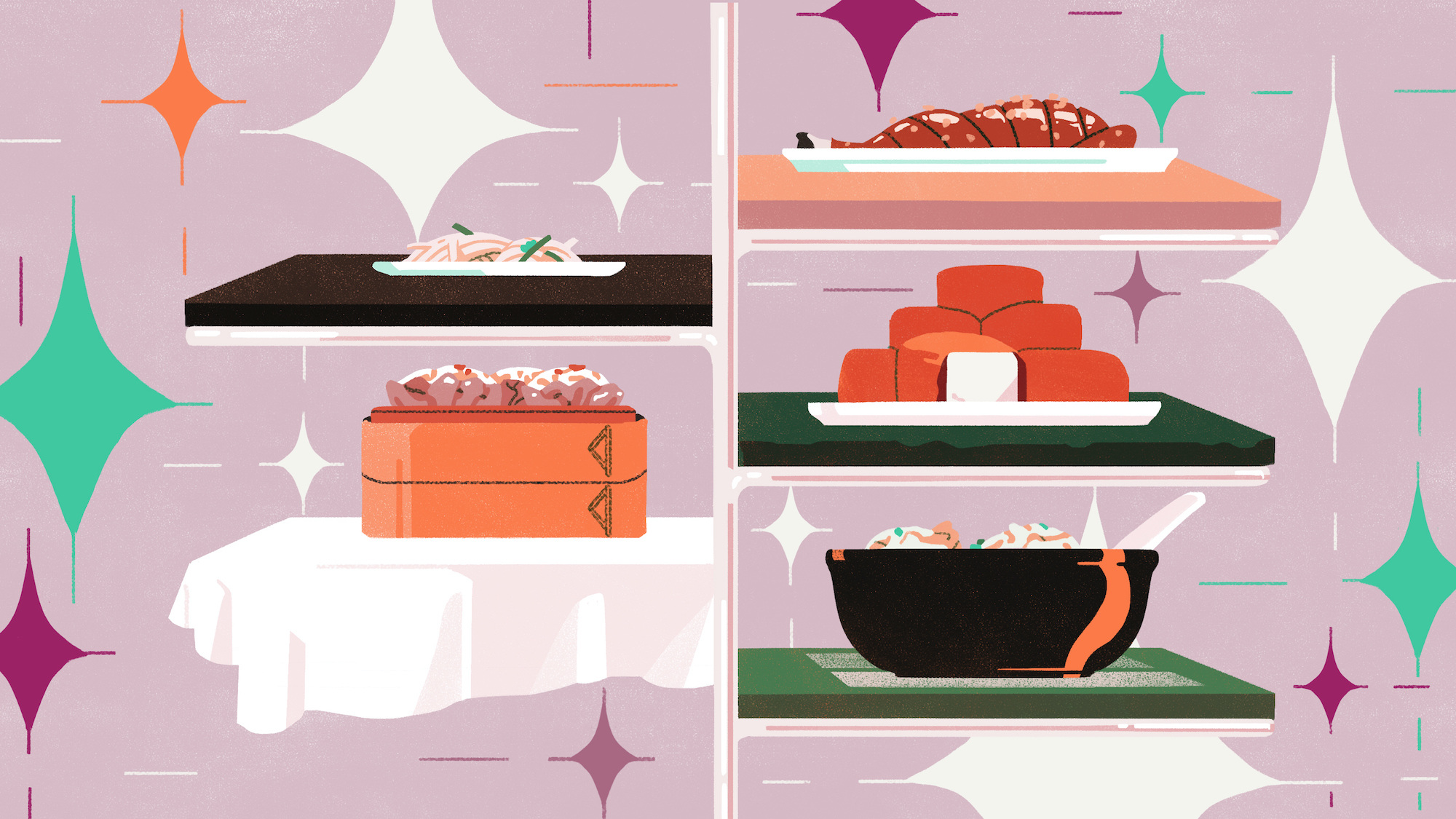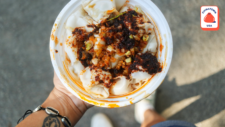

Stop Calling Chinese Food Cheap. It Can Be Exceptional at Every Price.
There never has been a better time to eat Chinese food in New York City. From pleated Cantonese dumplings to hearty Uyghur lamb pies, the breadth of Chinese cuisines across the five boroughs is deliciously diverse. And while I hope the specificity continues to flourish, I also can’t help thinking that something is missing: Why is Chinese food in New York still so inexpensive?
In Hong Kong, where I grew up, it was evident at an early age that the local cuisine could be a democratized experience, but also conspicuously costly. Dim sum, as one example, could be as affordable as a $4 metal steamer basket of siumai at Tim Ho Wan in Sham Shui Po, or as extravagant as the three Michelin-starred experience at Lung King Heen (where the siumai costs three times as much and is garnished with delicacies like Yunnan ham). So it simply never crossed my mind that Cantonese food shouldn’t be expensive. Or, more importantly, I always assumed that a range in prices — vertical diversity, as I’ve come to call it — was obvious when it came to dining out in Chinese restaurants.
It was a minor shock, then, when I moved to New York in the mid-aughts and saw that the most beloved Chinese restaurants were consistently, exceedingly cheap. Like, five dumplings for a dollar cheap. At the time, going out to eat was escalating into a competitive sport, and $30 craft burgers or extravagant tasting menus were acquired like trophies. But when it came to non-European immigrant cuisines, food-curious diners were on the hunt for “authenticity” in the outer reaches of Queens and Brooklyn. More often than not, “authentic” was shorthand for cheap, so cheap became good. What spendy Chinese food could be found, in restaurants few and far between, was suspiciously cast as a white-washed con, or an exoticized accessory at downtown clubs. Hakkasan, for example, never quite escaped its overpriced reputation — even though the food, especially the dim sum, was good. The restaurant closed last November, a casualty of the pandemic.
To be clear: Cheap food can absolutely be good food, although making it a totem for authenticity is as problematic as the idea of authenticity itself, especially when it’s criteria that only applies to non-Western European foods. Some of the best Cantonese food in New York will always cost $10 or less — as we’ll see — no matter how many upscale restaurants open. In fact, Hong Kong is one of the world’s greatest food cities for this exact reason. The city is brimming with unfussy, informal shops like Lau Sum Kee in Kowloon, for example, where the house specialty shrimp-roe noodles have been made in the same traditional method since 1956. Steeped in history and promising the practiced skill of a third-generation chef, a bowl of noodles from Lau Sum Kee doesn’t cost more than five U.S. dollars. But just as cheap food isn’t always good, good food isn’t always cheap.
Thinking back to my first years in New York, there were a number of attempts to meaningfully diversify the mostly inexpensive Chinese restaurant landscape. In 2008, the acclaimed Chinese-Canadian chef Susur Lee opened Shang, his first New York restaurant. I remember excitedly making reservations with friends from Hong Kong, hopeful that the meal would provide some familiar comfort and validation that Chinese food in America could be both good and glamorous.
The restaurant, with its generalized pan-Asian menu, didn’t quite last three years. That was when it became clear New York’s restaurant scene — like any restaurant scene, really — is a unique reflection of the city’s people, its history and its economics. Restaurants and the people who run them are complicated, bound by factors beyond their control; menus, décor and design are shaped (or stifled) by customers’ tastes. Market forces, whether profit margins or real estate, are the real difference between success and failure. Maybe New York just wasn’t ready for fancy Chinese food.
▪️
The point is that
the craftsmanship
of Chinese cuisine,
cultivated over hundreds
of years, is worthy
of a range of price tags.
▪️
But equal opportunity elitism for Chinese cuisine, or any marginalized cuisine for that matter, isn’t the point either, just as more expensive ingredients, formal training, and more emphasis on service or design aren’t inherently good or better than the opposite. What is actually good is giving Chinese cuisine — or cuisines — the space to exist along a spectrum: as a bargain-cheap meal, a blow-the-bank artistic pursuit, and everything else in between. The point is that the craftsmanship of Chinese cuisine, cultivated over hundreds of years, is worthy of a range of price tags.
In the years after Shang closed, other notable openings challenged the cheap and unpolished expectations of a Chinese restaurant in New York, like Ed Schoenfeld and Joe Ng’s Red Farm, or Jason Wang’s Biang. But it wasn’t until 2015, when an encouraging new class of modern Chinese restaurants opened, that things began to really feel different. Places like Mala Project and Hunan Slurp are designed and priced more like Chinese restaurants as they might exist today in cities like Shanghai and Hong Kong, and Taipei. Suddenly, there seems to be an appetite for Chinese food that might cost a little more than it used to.
It’s still a struggle to find an dining room outside Asia that captures the true technical prowess of hardcore fine Chinese dining — and thus its price tag — though I’m encouraged by the success of restaurants like A. Wong in London, Mister Jiu’s in San Francisco and even Benu, where chef Corey Lee experiments with many Chinese techniques. Even in New York, while there remains an outright vacancy of this kind of dining, there are so many more excellent Cantonese spots, and Chinese restaurants more broadly, than when I first arrived.
With that in mind, here are five dishes that emulate the diversity of Hong Kong’s restaurant scene, right here in New York City, from a great deal to total splurge. Because Chinese food is so much more than cheap.
Mahira Rivers is a restaurant critic and writer based in New York. In addition to spending five years as an anonymous inspector for The Michelin Guides, her writing has been published in The New York Times, New York Magazine, Food & Wine, GQ and elsewhere. Follow her on Twitter and Instagram. Follow Resy, too.
Discover More

Stephen Satterfield's Corner Table

















